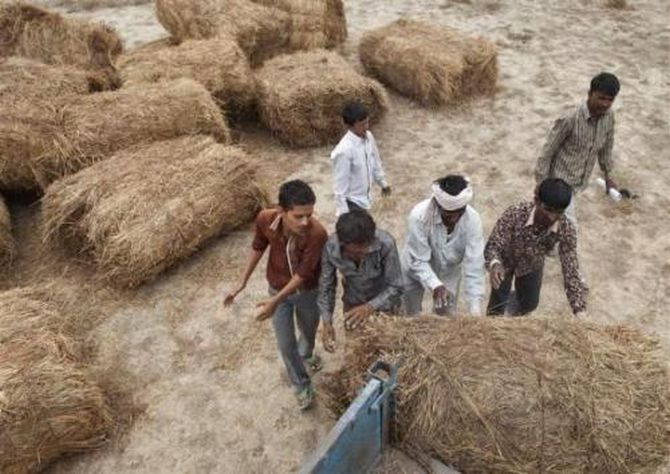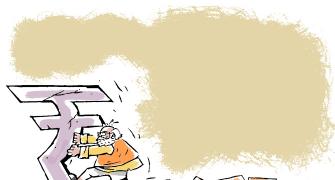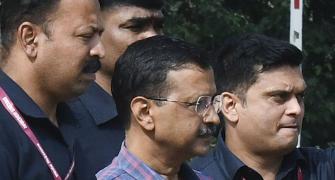In Gujarat, of the 12.5 million hectare of area under cultivation, while six million is dependent on rainfall, two million is covered by groundwater, a bulk of which is said to be in north Gujarat.
Scanty rainfall in the last one and half years has not only depleted groundwater level but also affected dams.
Part 1: Chennai witnessing one of the worst droughts in over 70 years

A mound of dry castor husk meant for cattle fodder sits at the entrance of Balwantsinh Solanki’s farm in Gangudara village of Banaskantha district in north Gujarat.
What is unusual about the fodder is that typically cattle need to be fed with fresh green fodder for better yield.
But a depleted groundwater and lack of irrigation have forced Solanki to manage with dry castor husk for his 10 cows and four buffaloes.
Impact of this lack of water is evident in the decline of daily milk production for Solanki, from 120 litres a year ago to less than 50 litres now.
What adds to his woes is the fact that, unlike in other parts of the state, farmers like Solanki in north Gujarat are equally, or at times more, dependent on animal husbandry and agriculture.
Which is why, Banaskantha district houses Banas Dairy, one of the largest dairy cooperatives in the state under the Gujarat Co-operative Milk Marketing Federation.
By September 2018, Gujarat had recorded a 22 per cent deficiency in rainfall, thereby impacting not just groundwater table but also storage in dams and reservoirs as well as winter crop production.
This year, while the Indian Meteorological Department has forecasted a delayed but normal monsoon, a drought early warning system developed by an Indian Institute of Technology Gandhinagar faculty Vimal Mishra predicts severe drought in several states, including northern and western parts of Gujarat.
In Gujarat, of the 12.5 million hectare of area under cultivation, while six million is dependent on rainfall, two million is covered by groundwater, a bulk of which is said to be in north Gujarat.
Scanty rainfall in the last one and half years has not only depleted groundwater level but also affected dams.
“Till 2017, I was using three borewells for eight hours every day which drew groundwater at just 70 feet.
"Today, I am only able to run one connection for half an hour that gets me water at a level of 133 feet before throwing up rocks and pebbles,” Solanki rues, as he shows the hardly an acre or two of grass growing in his 16 acre wide farmland.
“I have managed to somehow grow this grass to offset the dry castor husks I have to buy as cattle feed,” says Solanki.
Roughly 40 km away, groundnut and potato farmer Jethabhai Patel of Sotwada village in Banaskantha has seen his monsoon crop yield fall to 50 per cent, winter crop to 30 per cent of normal and summer crop to mere 10 per cent.
A couple of years ago, Patel - whose village is also entirely dependent on groundwater - had to shift from a 15 horse power (hp) motor pump for drawing water 500 feet deep to a 50 hp motor pump for drawing water from beyond 1,200 feet.
Ironically, both the villages are surrounded by not one but two major dams of the state - Dantiwada and Sipu. As of May 10 this year, both the dams (of the four in Gujarat) have below 10 per cent current storage levels against their capacity.
According to the Gujarat government’s Narmada, Water Resources, Water Supply & Kalpasar Department, while Dantiwada has 7.27 per cent, or 29 million cubic metres (mcm), of storage against a total capacity of roughly 398 mcm, that of Sipu is 8.36 per cent, or 14 mcm, of total 161 mcm.
However, the storage levels at Dantiwada and Sipu dams do not bother Solanki and Patel.
“Several villages like ours in this area are not connected to these dams as there are no micro canals feeding in the water.
"This forces us to depend entirely on groundwater which has been depleting though potable drinking water is not much of an issue for now,” says Solanki.
Tharad, a nearby taluka in the vicinity and a state Assembly seat won by the Bharatiya Janata Party’s Parbatbhai Patel, is connected to one of the dams, Solanki points out.
Yet, Gujarat’s Minister for Water Resources Kunvarji Bavaliya asserts that the government has been actively providing tanker facilities and that the impending drought in the groundwater-dependent areas will not be of much concern.
“Standing instructions have been given to all districts for extending tanker services.
"Where groundwater is available, borewell facilities are being set up by the government.
"The current schemes are based on 2011 Census and so demand and usage in certain villages might have risen,” says Bavaliya, adding that around 460 tankers of 5,000 litres to 10,000 litres are currently in service doing multiple rounds across the state, especially in north Gujarat.
Meanwhile, experts believe that the upcoming monsoon could be the only saviour for north Gujarat, unlike Saurashtra which is still rainfall-dependent and somewhat irrigated.
“Of all the regions, north Gujarat is the most groundwater-dependent and as a result, most affected.
"Also, the impact has been equally high on crop and cattle. Farmers unable to maintain cattle due to water scarcity are now selling them in other villages.
"Only a good monsoon could bring in some respite this year by raising the groundwater levels,” says B S Deora, dean, College of Renewable Energy and Environmental Engineering, Sardarkrushinagar Dantiwada Agricultural University.
Photograph: Ahmad Masood/Reuters










